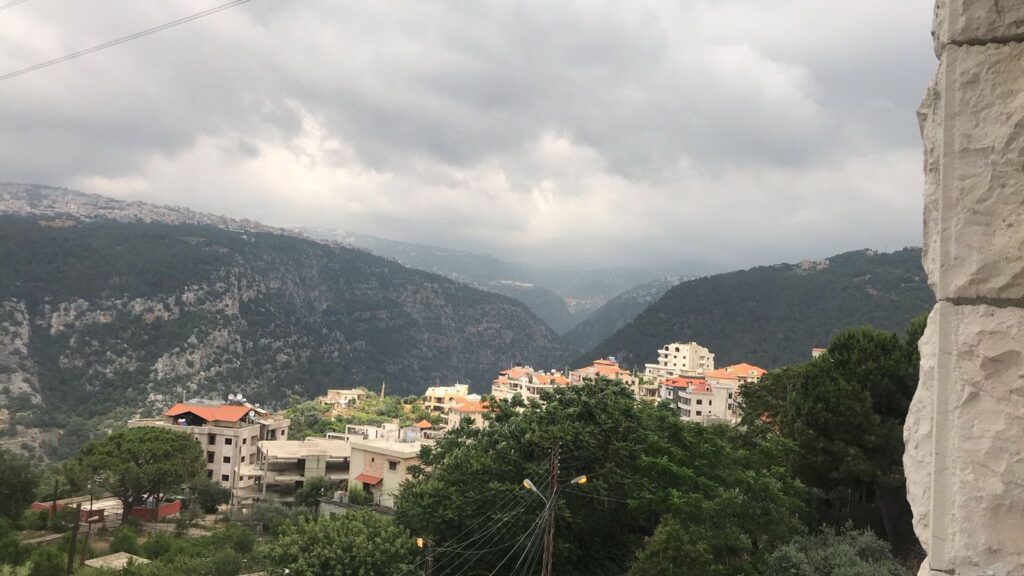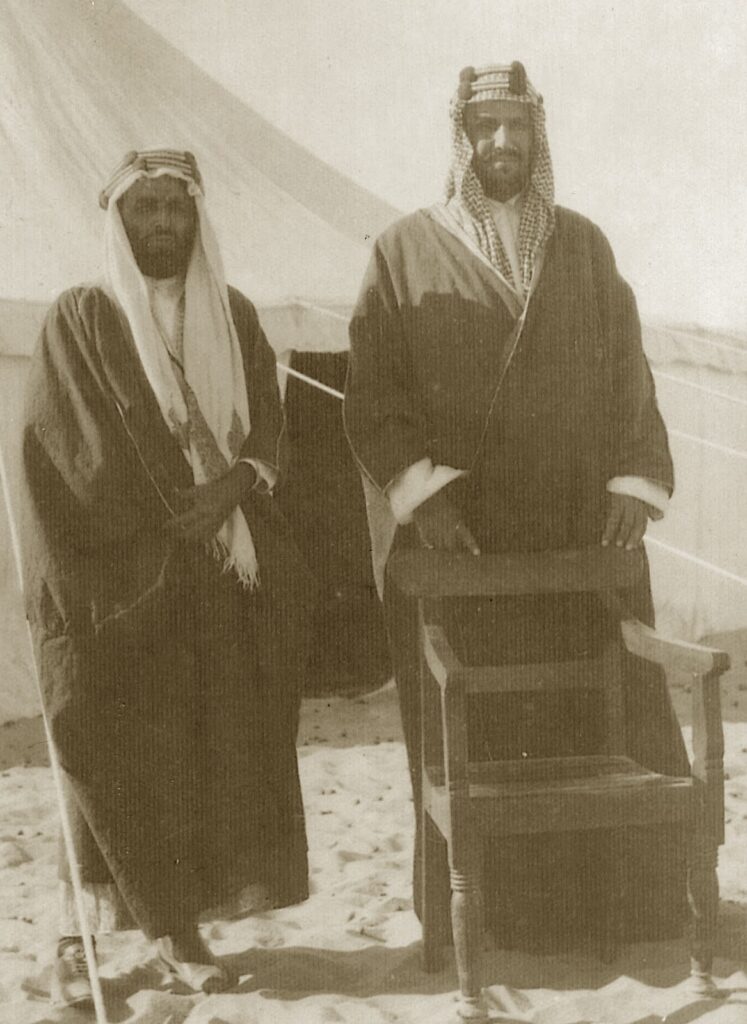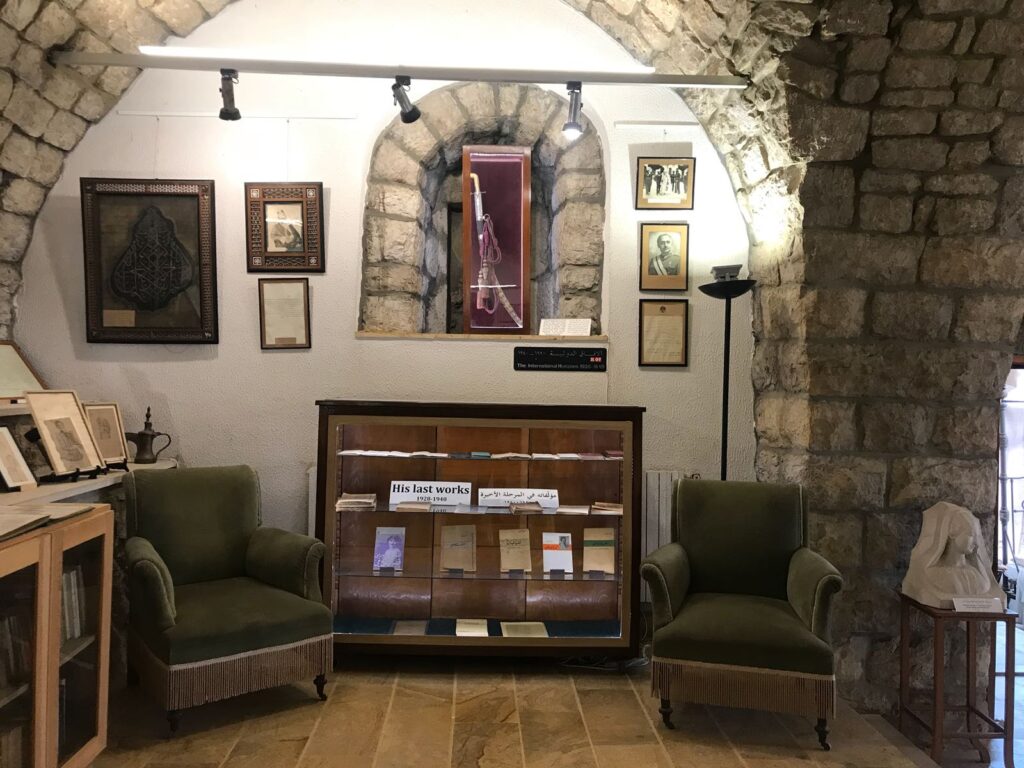A Tour of the Ameen Rihani Museum in Freike, Lebanon
Introduction
In the summer of 2018, Khayrallah Center intern Hannah Chaya traveled to Freike, Lebanon to help digitize the contents of the Ameen Rihani Museum. The Khayrallah Center has embarked on an extensive project in collaboration with the Ameen Rihani Organization, headed by Dr. Ameen Albert Rihani (the nephew of the famed Lebanese-American writer) to preserve Rihani’s original manuscripts and letters. Hannah, a Lebanese-American herself, traveled to Lebanon for eight weeks, during which time she inventoried the museum’s contents and conducted multiple interviews with Dr. Rihani. She is writing a series of blog posts for the center in recollection of her experiences. This first post discusses the layout and contents of the museum as they reflect Rihani’s philosophy and legacy.
A Tour of the Museum, by Hannah Chaya
Ameen Ferris Rihani is widely recognized as an intellectual who helped shape the Nahda, the modern Arab cultural renaissance that began in the middle of the nineteenth century. His experience as a Lebanese immigrant in the United States, and his travels between the Middle East and North America influenced his linguistic writing style, and in turn influenced the Arabic literary language of many subsequent writers and intellectuals. Today, the Ameen Rihani Museum in Freike, Lebanon preserves his work. The collection itself started in 1897 and includes many rare historical articles and artifacts. With the help of Rihani’s family, the Ameen Rihani Foundation, and an international body of scholars, Rihani’s collection continues to grow today.

This summer, I was given the opportunity to work at the Rihani Museum to research and collaborate with the Khayrallah Center’s project to digitize the Rihani collection. I worked with Dr. Ameen Albert Rihani, Rihani’s nephew, and conducted oral history interviews with him. The time I spent at the museum working with Dr. Rihani taught me about the collection, the Rihani family history, and the critical importance of preserving the Rihani legacy for generations to come.

Albert Ferris Rihani, Ameen Rihani’s youngest brother and Dr. Rihani’s father, established the Rihani Museum in 1953 in the Rihani home. The museum tells the story of Ameen Rihani’s life, beginning with his birth in 1876 to his death in 1940. Over time, it has been reimagined and re-designed. Originally, the museum included the main floors of the home, such as Rihani’s intact office on the first floor. However, as the museum attracted growing audiences over time, the family decided to move the museum to the rez de chaussee or ground floor, which was once the stables that housed five horses gifted to Rihani by King Abdul ‘Aziz Sa’ud. The family renovated the museum, and under the auspices of the president of the Republic of Lebanon, it was reopened in the summer of 1985. The refurbished museum preserved the arcade-style architecture and a few of the horses’ stone troughs outside of the museum entrance.

Today, the museum is organized chronologically and divided into eight sections: The Beginnings (1876-1905); The Years of Khalid (1905-1911); The Experience of the West (1911-1921); The Arab Dream (1922-1928); The International Horizons (1922-1940); Rihani’s Bedroom; The Arts; and The Archives. In each section, photos, manuscripts, sketchbooks, and personal belongings such as Rihani’s stone collection, hat collection, typewriter; and gifts from Arabian royalty help tell the story of Rihani’s life. According to Dr. Rihani, the organization of the museum gives “…a clear idea of Rihani even for those visitors who just know him by name…So just for someone who is almost ignorant about Rihani’s life and works, in three-quarters of an hour, a detailed visit would give that particular person a clear idea about Rihani’s life, about Rihani’s works, and his major commitments in his career which [were] related to his major trains of thought.”


Rihani was a man of letters shaped by his cultural rootedness in the Middle East and his immigrant experiences in the US. His belief in religious tolerance and drive for political and social justice encouraged his activism worldwide. In 1917, he met with Theodore Roosevelt concerning the Palestinian cause, as Rihani considered Palestine a part of his greater cultural identity as a “Syrian.” In the 1920s, Rihani voyaged to the Arabian Gulf where he met with various local leaders, which most famously included King ‘Abdul Aziz Sa’ud, who gifted Rihani a sword and two beautifully woven carpets, and King Hussein the Sharif of Mecca and al-Hejaz, who gifted Rihani a holy piece from al-ka’aba, usually reserved for kings and rulers of Islamic states, and despite the fact that Rihani was Christian. King Hussein also offered Rihani the princehood dagger of Hejaz, but Rihani respectfully declined because, he explained, that accepting any title would challenge his integrity and reliability.

All of these artifacts, and many more are preserved in the museum, and serve as testaments to Rihani’s wide ranging travels and encounters. But perhaps what brings Rihani to life in the museum more than anything else are his desk, the staging of his room, and the archival section. Rihani’s desk is placed outside of the bedroom exhibit and on it are, among other items, his feathered pens, personal books, typewriter, and well-used English dictionary–items he most certainly used as he wrote his influential works. The bedroom contains all of Rihani’s furniture and other items that were moved downstairs as a part of the renovation of the museum. The bedroom showcases his bed, bathroom, hat collection, and a samples of his Western, European, and Arab clothing. There are also sections of Rihani’s personal library in his bedroom and in the archival section of the museum; however, the majority of his library is on the main floor in large wooden cases that shelve over 500 books.
The archival exhibit presents Rihani’s personal artwork, portraits and busts dedicated to Rihani and the museum, and an archive of works written about Rihani. One highlight from this collection is Rihani’s personal sketchbook. It contains about 36 drawings divided thematically into the following categories: Shakespearean Characters (1896-1897), Caricatures (1898-1903), Nudes (1912; 1916; 1920), Arab Figures (1922-1923), Female Figures (1930-1931; 1936; 1939-1940), and Landscape (1938). Some of these sketches were published in his books, such as The Triple Alliance in the Animal Kingdom (1903) and Muluk Al Arab or The Kings of Arabia (1924), while others have never been published. Additionally the collection showcases works dedicated to Rihani by other renowned authors such as: Gibran Khalil Gibran (1911), Henrike Gonzalez (1918), William Oberhardt (1921), Helen Peal (1921), Khalil Salibi (1925), and Mustapha Farroukh (1938). Finally, the archive includes copies of translations of Rihani’s works in 54 languages and multiple volumes of newspaper and press clippings about Rihani. Rihani himself began collecting press clippings by or about himself as early as 1897. His brother, Albert, dedicated much of his time to finding and preserving these artifacts and carrying on the collection with the help of other Rihani family members. According to Dr. Rihani, the museum has relatively all of the articles ever written about Rihani worldwide.

To visit the museum and view the collection allows visitors to imagine Rihani humanly and intellectually, understand the magnitude of his cultural impact, and gain a sense of his relationship to his contemporaries and to his world. Rihani inspired many of his peers’ writings, including Khalil Gibran’s The Prophet. Yet, Rihani’s influence goes far beyond Gibran, across the Middle East, and into the hearts of the Lebanese diaspora. The significance of Rihani’s legacy is deeply ingrained in his family members, who continue to preserve his history at the museum in Lebanon and in Washington, D.C. at the Ameen Rihani Organization. And now, with the help of the Khayrallah Center, digitized forms of many of Rihani’s original manuscripts and letters will soon be accessible online to scholars worldwide so that they can continue to explore Rihani’s cultural significance and influence.
- Categories:


